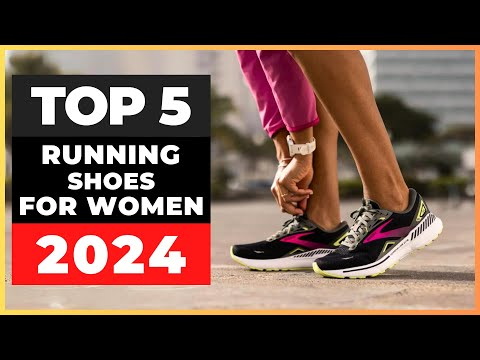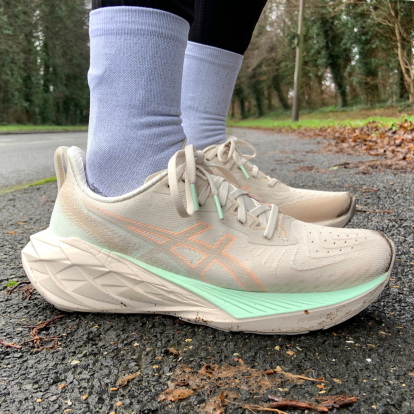Content Menu
● Understanding Your Needs
● Top Running Shoes for Women in 2024
>> 1. ASICS Novablast 4
>> 2. Brooks Ghost 16
>> 3. HOKA Rincon 4
>> 4. Nike Pegasus 41
>> 5. Saucony Kinvara 15
● Choosing the Right Fit
● Features to Look For
● Latest Trends in Running Shoes
>> Sustainability
>> Responsive Cushioning Technologies
>> Customization Options
● Breaking In Your New Running Shoes
● Conclusion
● FAQs
>> 1. How often should I replace my running shoes?
>> 2. Can I use my running shoes for walking?
>> 3. What should I do if my heel slips out of my running shoe?
>> 4. Are women's running shoes really different from men's?
>> 5. Do I need special shoes if I overpronate?
Finding the right running shoes can significantly enhance your running experience, whether you're a seasoned marathoner or a casual jogger. With countless options available, it can be overwhelming to choose the best pair. This comprehensive guide will explore the top running shoes for women in 2024, their features, and what to consider when making your selection.

Understanding Your Needs
Before diving into specific shoe recommendations, it's essential to understand your running style and needs. Consider the following factors:
- Foot Type: Do you have flat feet, high arches, or a neutral foot type? This will influence the type of support you need.
- Running Terrain: Are you running on roads, trails, or a mix of both? Road shoes typically offer more cushioning, while trail shoes provide better grip and stability.
- Distance: Different shoes cater to different distances. Longer runs may require more cushioning and support.
- Personal Preferences: Comfort is key. Everyone's feet are unique, so what works for one person might not work for another.
Top Running Shoes for Women in 2024
Here are some of the best running shoes for women this year, based on expert reviews and user feedback:
1. ASICS Novablast 4
- Best For: Everyday miles
- Weight: 225g
- Drop: 8mm
- Price: £135
The ASICS Novablast 4 is praised for its comfort and responsiveness. It features a smooth heel-to-toe transition and is versatile enough for various running styles. The upper is made from a woven material that provides a plush feel without excessive bulk. Runners with wider feet appreciate the roomier fit of this model compared to its predecessor.
2. Brooks Ghost 16
- Best Overall
- Weight: 241g
- Drop: 12mm
- Price: £135
The Brooks Ghost 16 is known for its plush cushioning and energetic ride. It offers a comfortable fit with plenty of size options, making it suitable for various foot shapes. The shoe's springy response encourages faster paces while still being ideal for recovery runs.
3. HOKA Rincon 4
- Best For 5-10K Running
- Weight: 193g
- Drop: 5mm
- Price: £110
Lightweight and cushioned, the HOKA Rincon 4 is perfect for shorter runs. Its balance makes it a favorite among runners looking for speed without sacrificing comfort. The updated midsole provides improved cushioning and responsiveness compared to previous versions.
4. Nike Pegasus 41
- Best Fit Update
- Weight: Varies
- Drop: 10mm
- Price: $130
The Nike Pegasus line continues to impress with its responsive ride and breathable upper. It's a reliable choice for both casual runners and those training for races. The shoe's fit has been improved to accommodate various foot shapes comfortably.
5. Saucony Kinvara 15
- Best Value
- Weight: Varies
- Drop: 4mm
- Price: $110
The Saucony Kinvara offers a minimalist design that doesn't compromise on comfort. It's lightweight and responsive, making it ideal for speed workouts while still providing enough cushioning for longer runs.

Choosing the Right Fit
When selecting running shoes, fit is crucial. Here are some tips to ensure you find the perfect pair:
1. Try Before You Buy: Always try on shoes with the socks you plan to wear while running.
2. Check Length and Width: Ensure there's about a thumb's width of space between your longest toe and the front of the shoe.
3. Walk or Jog in Them: Test how they feel while moving; this will help identify any discomfort areas.
4. Consider Professional Fitting: Many specialty running stores offer gait analysis to help determine your ideal shoe type.
Features to Look For
When evaluating running shoes, consider these key features:
- Cushioning: Look for adequate cushioning that suits your foot type and running style.
- Support Type: Determine whether you need neutral shoes or those designed for overpronation.
- Breathability: A breathable upper material can enhance comfort during long runs.
Latest Trends in Running Shoes
The running shoe industry is evolving rapidly with new technologies and materials aimed at improving performance and comfort:
Sustainability
Many brands are now focusing on eco-friendly materials and sustainable manufacturing practices. Shoes made from recycled plastics and natural fibers are becoming more common as consumers demand environmentally responsible products.
Responsive Cushioning Technologies
Advancements in midsole technologies are leading to more responsive cushioning options that adapt to a runner's stride, providing better energy return and comfort during runs.
Customization Options
With advancements in technology, brands are beginning to offer customizable options where runners can select their preferred cushioning levels, colors, and even fit adjustments based on their unique foot shapes.
Breaking In Your New Running Shoes
Once you've selected your new pair of running shoes, it's essential to break them in properly to avoid discomfort or injury:
1. Walk Before You Run: Start by wearing them around the house or during short walks to help them adjust to your feet.
2. Short Runs First: Take them out for short runs of about 20–30 minutes before committing to longer distances.
3. Good Socks Matter: Use proper running socks made from synthetic materials that wick moisture away from your feet to prevent blisters.
4. Rotate Shoes: If possible, alternate between your new shoes and an older pair during the break-in period to reduce strain on your feet.
Conclusion
Selecting the right running shoes can make all the difference in your performance and enjoyment while running. The ASICS Novablast 4, Brooks Ghost 16, HOKA Rincon 4, Nike Pegasus 41, and Saucony Kinvara 15 are excellent choices to consider in 2024. Always prioritize comfort and fit over style or brand loyalty to ensure an enjoyable running experience.

FAQs
1. How often should I replace my running shoes?
Most experts recommend replacing running shoes every 300 to 500 miles, depending on wear patterns and shoe type.
2. Can I use my running shoes for walking?
Yes, once you've retired them from running (after about 300–500 miles), they can be suitable for walking as long as they still feel comfortable.
3. What should I do if my heel slips out of my running shoe?
This is common in many women's shoes due to fit issues. Try adjusting your lacing technique or using insoles to improve fit.
4. Are women's running shoes really different from men's?
Yes, women's shoes are generally designed with different widths and cushioning levels tailored to women's foot shapes and biomechanics.
5. Do I need special shoes if I overpronate?
Yes, if you overpronate (your foot rolls inward), look for stability or motion control shoes that provide extra support to prevent injuries.

















